A leading Australian expert on diabetes, Professor Stephen Colagiuri, has called on the Australian Government to follow the UK’s lead and implement a tax on sugary drinks to help curb the epidemic of Type-2 diabetes. From The ABC:
Professor Stephen Colagiuri was the only Australian contributor to the World Health Organisation’s (WHO) inaugural global report on Diabetes.
According to the report, the number of people worldwide with diabetes has quadrupled since 1980, with an estimated 422 million adults living with the disease in 2014.
Globally, diabetes and higher-than-optimal blood glucose together caused 3.7 million deaths.
Professor Colagiuri said Australia was about average in the total number of people with diabetes.
“We are also regrettably average in the increasing rates of diabetes that we see in Australia,” he said.
“And we’re fairly high up on the list of countries with regard to overweight and obesity, which is a major driver of diabetes.”
Professor Colagiuri said a sugar tax was one way the Government could tackle the problem…
“A sugar tax will clearly not be the only solution to the problem, but there has never been a successful public health intervention which has not involved some form of legislation and regulation, and leaving the changes to be made on a voluntary basis simply doesn’t work,” he said.
Placing a tax on sugary soft drinks would be a great start but no panacea.
Australia has one of the highest sugar consumption rates, along with the USA, Brazil, Argentina and Mexico. These countries each clock in at more than double the world’s average sugar consumption:
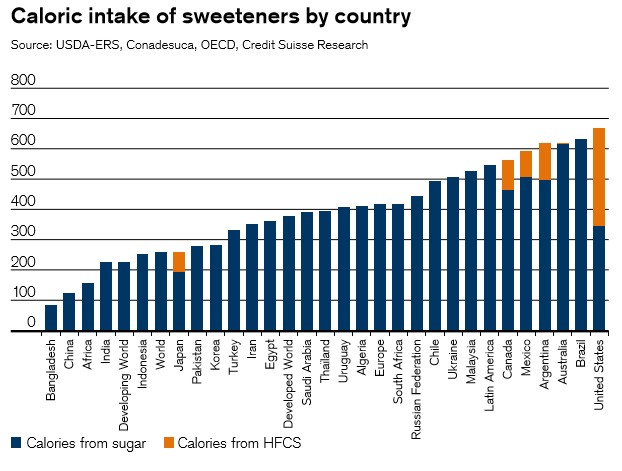
Australia is also one of the most obese nations on earth:
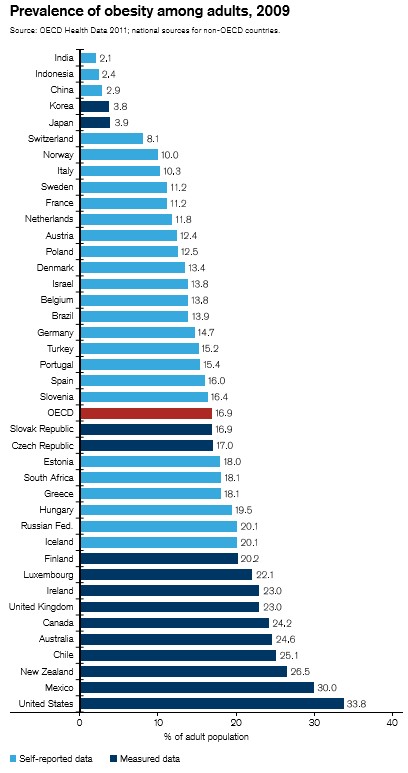
There are several channels in which sugar drives obesity.
First, sugar is a simple carbohydrate made up of two molecules, glucose and fructose. This bond is split-up in the stomach before being absorbed. Research shows that glucose primarily drives fat storage under the skin, whereas fructose deposits visceral fat around organs, such as the liver.
Worse, excess sugar intake can accelerate the development of Type 2 diabetes. When extra liver fat is made, that ends up obstructing the workings of the liver, and you can end up with ‘insulin resistance’, which is a precursor to Type 2 diabetes. Basically, the liver doesn’t work effectively, so the pancreas has to excrete extra insulin in order to shift blood glucose into your cells. This insulin also tells your body not to burn fat for energy, thus making your body store fat.
Second, sugar manipulates the hormones insulin and leptin, thus turning-off the receptors that make us feel full. It is particularly dangerous when disolved in things like soft drinks, since it is instantly and easily absorbed.
Type 2 diabetes is growing quickly in Australia. According to Roy Morgan Research, people diagnosed with some form of diabetes increased from 915,000 to more than 1.2 million between 2007 and 2015, a growth driven primarily by the rise in Type 2 diabetes, which accounts for just over 90% (1.1 million) of cases.
Therefore, given sugar’s unquestionable role in ‘diabesity’ (diabetes and obesity) in Australia, there is strong justification for curbing its consumption, including via a sugar tax.
That said, the epidemic of Type 2 diabetes extends beyond just sugar to the over-consumption of refined carbohydrates in general.
Since the Australian food pyramid was first introduced in 1982, it has told Australians to consume large quantities of high glycemic foods, such as breads and cereals:
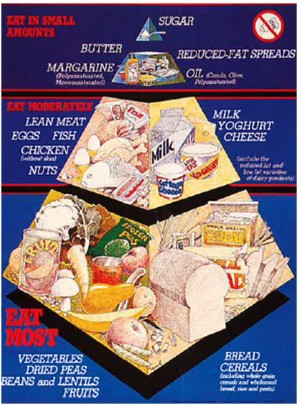
This food pyramid remained largely unchanged for 33 years until the pyramid was improved in 2015 to promote the importance of unrefined carbohydrates like vegetables and lessen the importance of refined carbohydrates like breads and cereals:
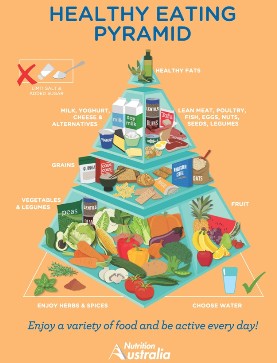
Common amongst both pyramids, however, is the recommendation to consume large quantities of carbohydrates and minimise the consumption of fats.
The problem with this recommendation is that consuming carbohydrates generally elicits a strong glycemic response (i.e. raises blood sugars quickly) whereas consuming fats elicits almost no glycemic response (i.e. keeps blood sugars stable):
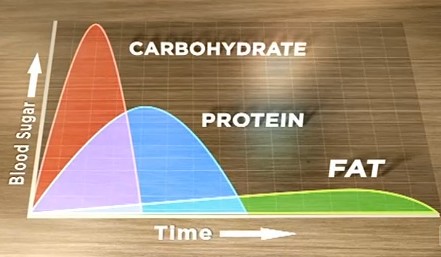
Therefore, if the government truly wants to prevent diabesity, the logical answer is to encourage people to cut-out refined carbohydrates (including sugar) and replace them with unprocessed natural foods that are high in fat (including saturated fats). This way of eating makes you feel full, keeps blood sugars low, lowers the body’s insulin response, and prevents insulin resistance and diabetes.
It’s also interesting to note that the Roy Morgan Research study on diabetes showed that diabetics are far more wedded to a low fat lifestyle than ordinary Australians:
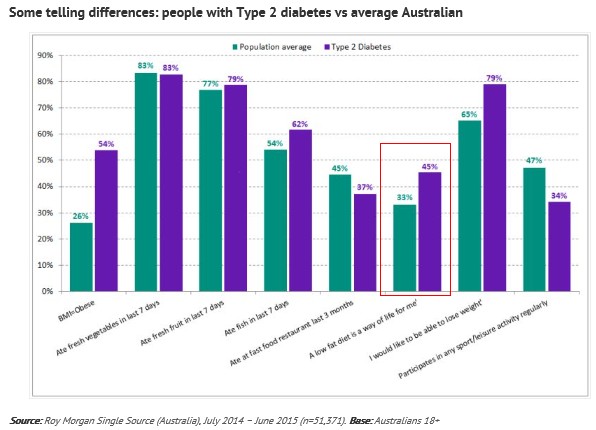
Here’s a thought. If they shifted their food consumption away from refined carbohydrates towards natural fats, then their blood sugars would be lowered as would their requirement for insulin.
The message is simple. To reduce the epidemic of Type 2 diabetes and obestity across the population, the dietary guidelines should be shifted towards a natural foods based diet that minimises the consumption of refined carbohydrates and maximises the consumption of natural fats.

